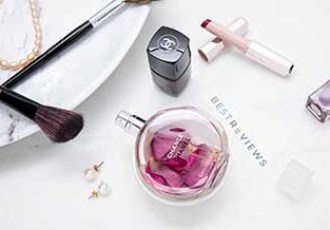BestReviews is reader-supported and may earn an affiliate commission. Details
We recommend these products based on an intensive research process that's designed to cut through the noise and find the top products in this space. Guided by experts, we spend hours looking into the factors that matter, to bring you these selections.

Though everyone knows how the sun can damage the skin, many people aren’t aware of the harmful effects the sun’s rays can have on the lips. Skin cancer can develop anywhere on the body, including the lips. In addition, lips frequently exposed to the sun are more likely to display premature signs of aging. Those who wear lip gloss further increase their risk of sun damage. Glossy lip products are reflective, drawing the sun’s rays to the lips.
However, no one wants to put traditional sunscreen on their lips. To protect your pout, apply a lip balm with SPF. Lip sunscreens also protect your lips from the elements. If it’s freezing cold or the wind is whipping around, a layer of lip sunscreen will provide protection from the drying effects of harsh weather.
Our buying guide has everything you need to consider when shopping for lip sunscreens. When you’re ready to buy, you’ll find our five favorite lip sunscreens in the matrix above.

The SPF rating on lip sunscreens tells you how well the product blocks UV rays:
Opting for a lip sunscreen with an SPF higher than 50 isn’t really worth the extra cost since no sunscreen blocks 100% of the sun’s harmful radiation.
For full protection from the sun, choose a lip sunscreen that offers broad-spectrum protection. This means that the lip sunscreen protects against both UVA and UVB rays. UVB rays are what cause sunburn, and frequent exposure to this type of radiation puts people at high risk for skin cancers like melanoma. UVA rays contribute to the signs of aging, such as wrinkles and age spots, and these rays can penetrate glass, including car windows. Exposure to UVA rays is also potentially cancer-causing. The best lip sunscreens protect against both UVA and UVB rays.
Your lips are an incredibly sensitive part of your body. A lip sunscreen will protect your lips not only from the sun but also from becoming chapped and dry. Plenty of lip sunscreens contain moisturizing ingredients like shea butter and coconut oil to help soothe the skin in addition to protecting it from UV rays.
Some lip sunscreens have a thick white consistency, which isn’t always ideal for every occasion. Look for lip sunscreens that have a thin, balm-like formula for everyday use. Choose a lip sunscreen formulated for sensitive skin if your lips are particularly sensitive or easily irritated.
Most lip sunscreens are water-resistant and provide sun protection for about an hour before needing to be reapplied. Because your lips get wet when drinking, a water-resistant formula is preferred.
For your no-makeup days, a lip sunscreen that adds a hint of color to your lips while providing UV protection is ideal. Many brands offer lip sunscreens in a range of subtle hues.
If you find that perfumed products irritate your skin, choose a fragrance-free lip sunscreen. Otherwise, there are plenty of scent options available. Coconut, vanilla, and peppermint scents are common.
A small tube of lip sunscreen costs significantly less than a bottle of SPF lotion or spray for the body. Expect to pay between $3 and $20 for a lip sunscreen. Most lip sunscreens offer at least SPF 30 protection.
Lip sunscreen prices vary depending on the quality of the ingredients, the SPF rating, and the brand. Buy a multipack of protective balms to save money, and you’ll have several tubes for stashing in your bathroom, gym bag, purse, and beach bag.
Here are some tips to help keep you safe from the sun’s damaging rays.

Q. How often should I reapply my lip sunscreen?
A. The recommendations for lip sunscreen are the same as for regular sunscreen: reapply about every two hours or more often if you’re swimming or sweating.
Q. Can I wear lip sunscreen and lipstick together?
A. Of course! Apply lip sunscreen over or under lipstick as needed. Lip sunscreen is also an ideal way to moisturize the lips before applying a matte lipstick.
Q. Do I need to apply lip sunscreen in the winter?
A. Yes. The sun can damage your skin every day of the year. If you’re heading out for an all-day excursion in the winter like skiing or snowboarding, we recommend applying sunscreen to your lips in addition to other exposed areas of your body. The sun reflects off of snow, increasing your risk of sun damage.
Q. Is there a difference between sunscreen and sunblock?
A. The ingredients in sunscreen are intended to penetrate the skin and absorb the sun’s rays to prevent them from damaging your skin. Sunblock is not absorbed by the skin and instead acts as a physical barrier to damaging UV rays. Sunblock utilizes ingredients like zinc oxide to physically block the sun’s rays, while sunscreens use chemical ingredients like oxybenzone to absorb UV light.
Get emails you’ll love.
Learn about the products you’re wondering if you should buy and get advice on using your latest purchases.
BestReviews wants to be better. Please take our 3-minute survey,
and give us feedback about your visit today.
